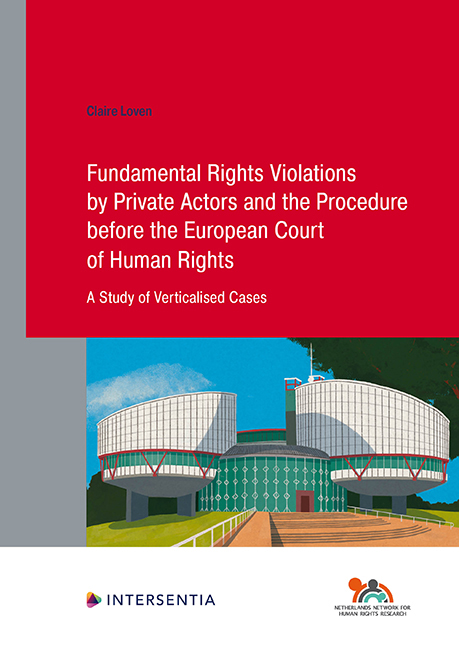 Fundamental Rights Violations by Private Actors and the Procedure before the European Court of Human Rights
Fundamental Rights Violations by Private Actors and the Procedure before the European Court of Human Rights Published online by Cambridge University Press: 29 February 2024
INTRODUCTION
The previous chapter showed that the third-party intervention procedure laid down in Article 36 of the Convention allows for intervention by actual third parties. It was explained that actual third parties are natural and legal persons implicated in the facts of the case and who were usually a party to the case at the domestic level. In other words, a private party involved in the conflict at the domestic level, but who is not the applicant in the case before the Court (i.e. the disappeared party) can request leave to intervene in the Court's proceedings. The chapter also showed that this particular type of third-party intervention is clearly ‘private interest-based’, meaning that it gives actual third parties the opportunity to provide the Court with more information on the rights and private interests at stake, including the exact meaning and importance of these rights and interests. Hence, actual third-party intervention is allowed under the Convention for due process reasons; it gives third parties the opportunity to be heard before a Court judgment that could affect their legal interests is issued.
The third-party intervention procedure laid down in Article 36 thus seems, at least in theory, to be an instrument that is already available in the Convention system for addressing the problems arising in verticalised cases. In practice, however, little use is made of this instrument, as shown in the analysis presented in Chapter 6 and further explained in the previous chapter. It also seems that even when an actual third party is granted leave to intervene in the Court's proceedings, the Court does not appear to take much account of that party's submissions. In other words, the instrument of thirdparty intervention, in its current form, does not seem to be realising its potential to resolve problems arising in verticalised cases. Illustrative in this regard is that Judges Ravarani and Elosegui stressed the ‘need to reconsider the third-party intervention mechanism under Article 36(2) of the Convention, in order to make it more concrete and effective’.
The current chapter consequently proposes to redesign the third-party intervention procedure to make it fit for addressing the problems arising in verticalised cases. More specifically, it is argued that, in contrast to the provisions in the current text of Article 36, actual third-party interveners should be granted a right to intervene in the Court's proceedings.
To save this book to your Kindle, first ensure [email protected] is added to your Approved Personal Document E-mail List under your Personal Document Settings on the Manage Your Content and Devices page of your Amazon account. Then enter the ‘name’ part of your Kindle email address below. Find out more about saving to your Kindle.
Note you can select to save to either the @free.kindle.com or @kindle.com variations. ‘@free.kindle.com’ emails are free but can only be saved to your device when it is connected to wi-fi. ‘@kindle.com’ emails can be delivered even when you are not connected to wi-fi, but note that service fees apply.
Find out more about the Kindle Personal Document Service.
To save content items to your account, please confirm that you agree to abide by our usage policies. If this is the first time you use this feature, you will be asked to authorise Cambridge Core to connect with your account. Find out more about saving content to Dropbox.
To save content items to your account, please confirm that you agree to abide by our usage policies. If this is the first time you use this feature, you will be asked to authorise Cambridge Core to connect with your account. Find out more about saving content to Google Drive.